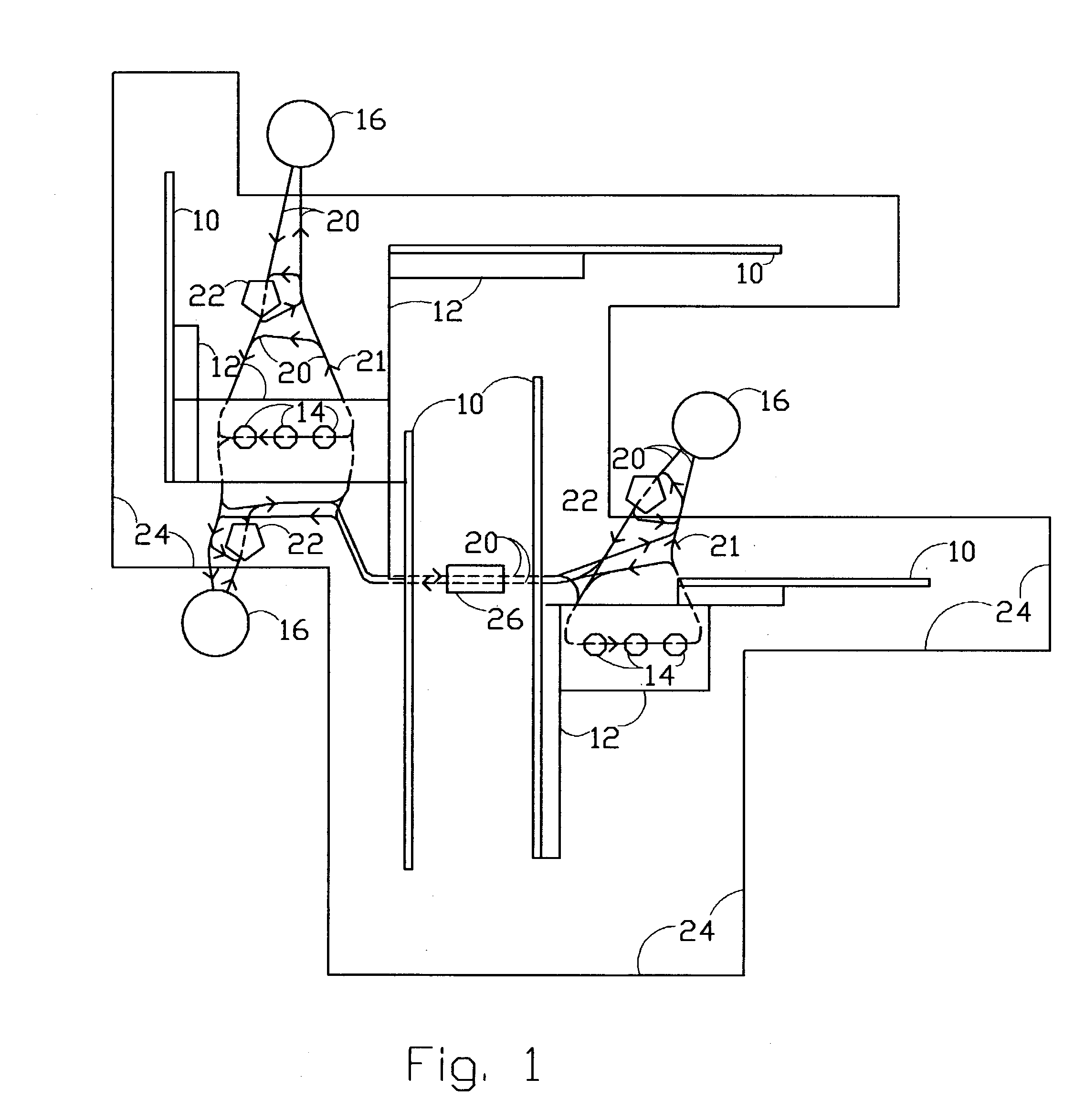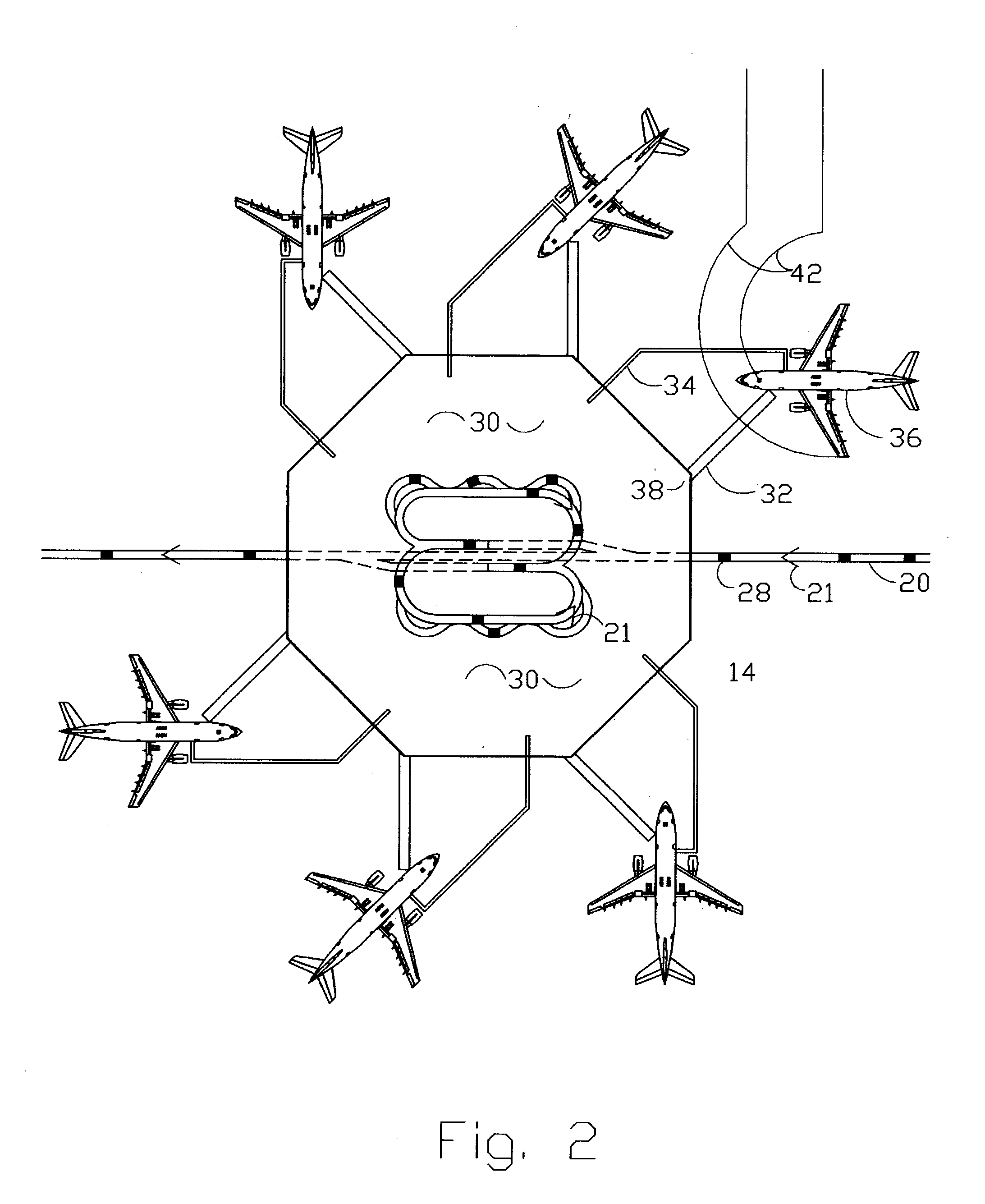Airport passenger processing and surface transportation system
a technology for airport passengers and surface transportation, applied in the field of airport passenger processing and surface transportation system, can solve the problems of inconvenient concessions, passengers spending considerable amounts of time waiting in line, and having to walk significant distances, so as to facilitate the disaggregation of airport travelers, facilitate security screening, and avoid potential terrorist targets
- Summary
- Abstract
- Description
- Claims
- Application Information
AI Technical Summary
Benefits of technology
Problems solved by technology
Method used
Image
Examples
Embodiment Construction
[0027] A preferred embodiment of the present invention is illustrated in FIG. 1 (top view). A plurality of runways 10 and taxiways 12 provide the airside infrastructure for a large airport serving paying passengers with scheduled flights. A plurality of concourses 14 is located in positions convenient for connection to groups of runways by means of taxiways. A plurality of intermodal centers 16 are located outside a secure perimeter 24 surrounding the runways and taxiways. A consolidated concessions facility 26 is located within the secure perimeter. The intermodal centers are connected to each other, the concourses and the consolidated concessions area by T-Pod guideways 20. T-Pod guideways pass through security screening facilities 22 prior to providing access from the intermodal centers to either the concourses or the consolidated concessions area.
[0028] FIG. 2 is an enlarged top view of a concourse 14. The T-Pod guideway 20 enters the concourse at ground level in the preferred e...
PUM
 Login to View More
Login to View More Abstract
Description
Claims
Application Information
 Login to View More
Login to View More - R&D
- Intellectual Property
- Life Sciences
- Materials
- Tech Scout
- Unparalleled Data Quality
- Higher Quality Content
- 60% Fewer Hallucinations
Browse by: Latest US Patents, China's latest patents, Technical Efficacy Thesaurus, Application Domain, Technology Topic, Popular Technical Reports.
© 2025 PatSnap. All rights reserved.Legal|Privacy policy|Modern Slavery Act Transparency Statement|Sitemap|About US| Contact US: help@patsnap.com



